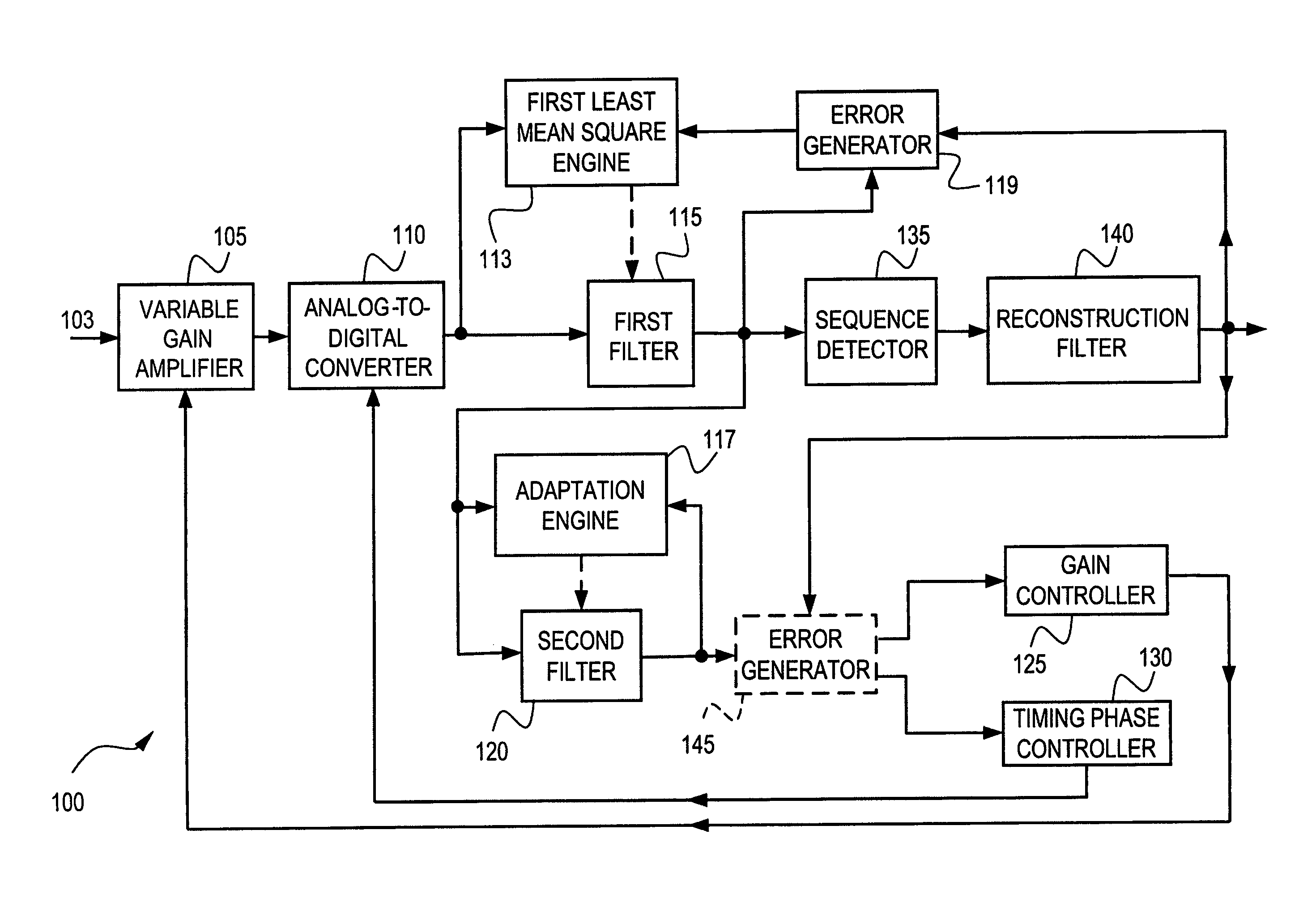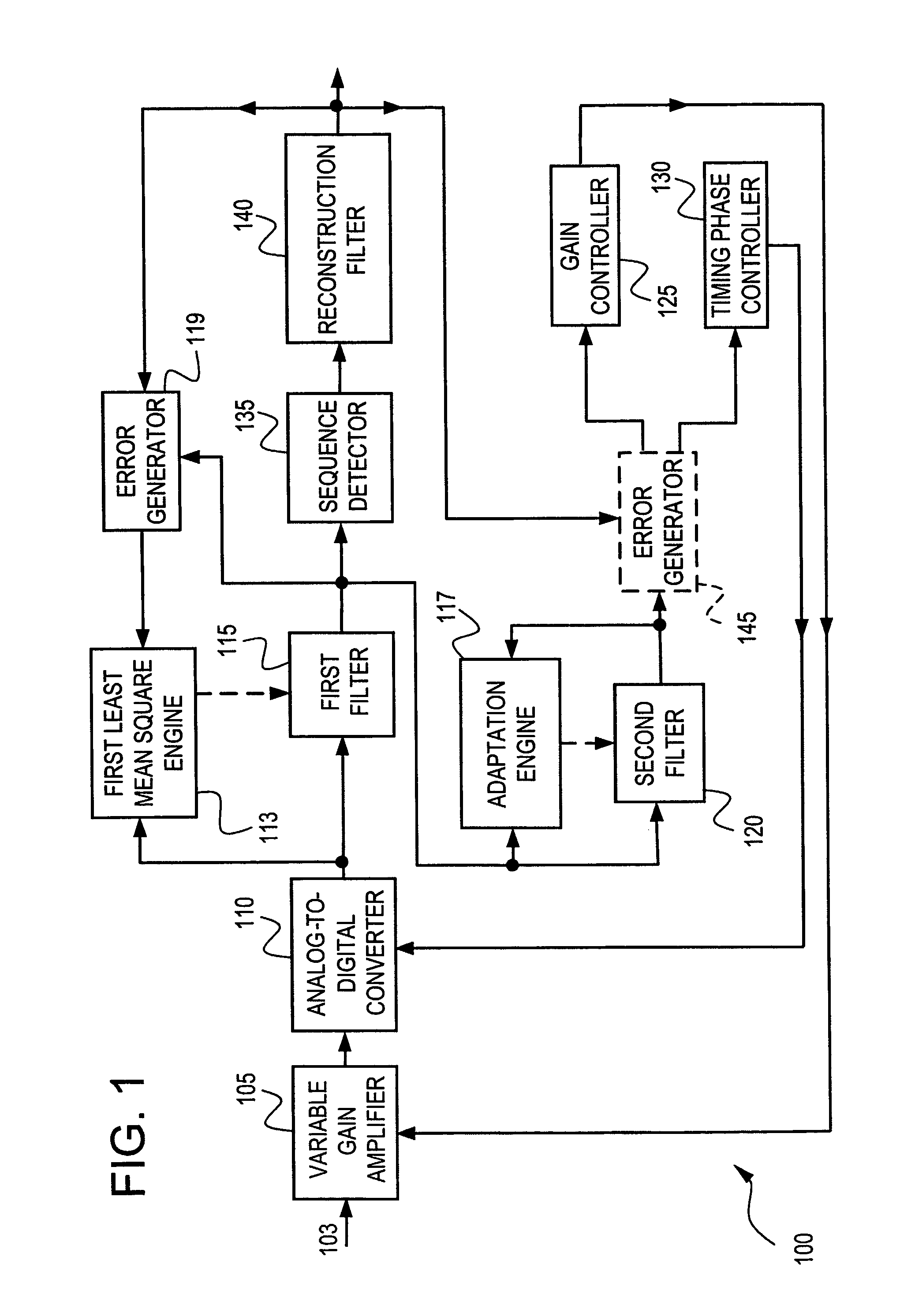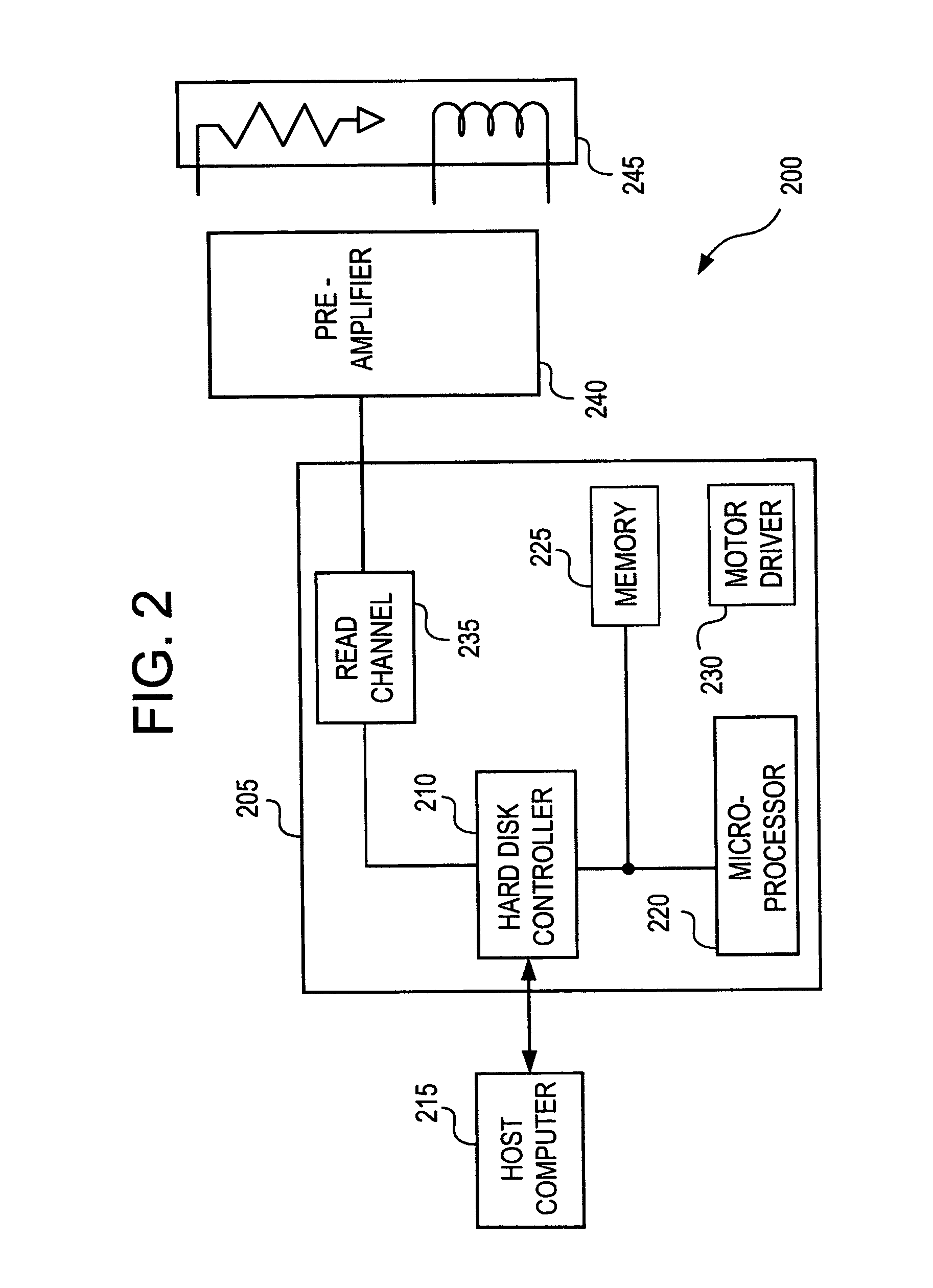System and method for controlling gain and timing phase in a presence of a first least mean square filter using a second adaptive filter
a technology of adaptive filter and gain and timing phase, which is applied in the field of least mean square filter, can solve the problems of unsatisfactory interaction, optimal error rate performance of data receiver, and general non-adjustment of zf agc algorithm to overall gain setting
- Summary
- Abstract
- Description
- Claims
- Application Information
AI Technical Summary
Benefits of technology
Problems solved by technology
Method used
Image
Examples
Embodiment Construction
[0077]Exemplary embodiments of the present invention are directed to a system and method for controlling gain and timing phase in the presence of a first Least Mean Square (LMS) filter using a second adaptive filter. According to exemplary embodiments, in an information communication system, such as, for example, a receiver, a disk drive or the like, a simple secondary filter, having tap weight coefficients updated according to an adaptive algorithm such as, for example, a LMS algorithm, can be added after a primary filter, having tap weight coefficients updated according to a LMS algorithm. At least one tap weight coefficient of the primary filter can be constrained or otherwise not adapted. The simple secondary filter can be added in the loop that implements the gain control and timing phase control of the information communication system. The simple secondary filter can be, for example, a two-tap filter or a three-tap filter. According to exemplary embodiments, the tap weight coe...
PUM
 Login to View More
Login to View More Abstract
Description
Claims
Application Information
 Login to View More
Login to View More - R&D
- Intellectual Property
- Life Sciences
- Materials
- Tech Scout
- Unparalleled Data Quality
- Higher Quality Content
- 60% Fewer Hallucinations
Browse by: Latest US Patents, China's latest patents, Technical Efficacy Thesaurus, Application Domain, Technology Topic, Popular Technical Reports.
© 2025 PatSnap. All rights reserved.Legal|Privacy policy|Modern Slavery Act Transparency Statement|Sitemap|About US| Contact US: help@patsnap.com



